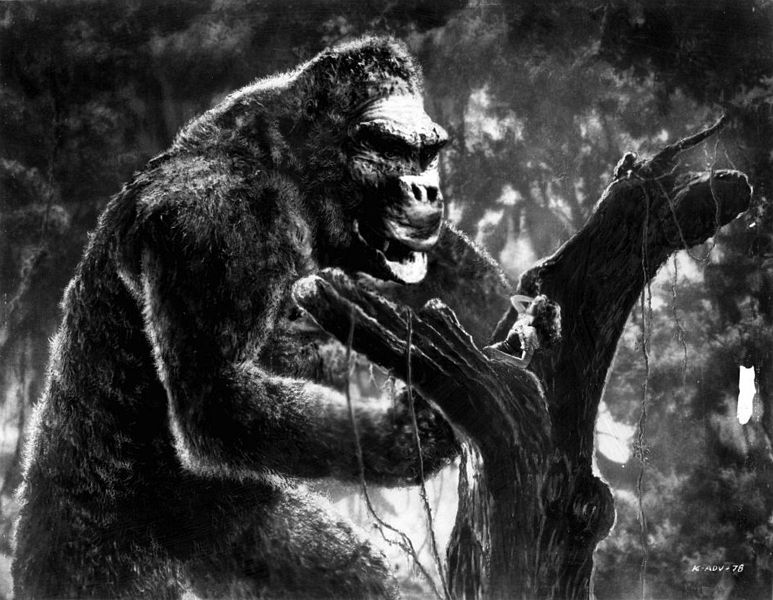
As he was preparing King Kong for his 1933 screen debut, producer Merian C. Cooper was continually dissatisfied with sculptor Marcel Delgado’s sensitive models of the giant ape. “I want Kong to be the fiercest, most brutal, monstrous damned thing that has ever been seen,” he insisted. Animator Willis O’Brien objected that the audience wouldn’t sympathize with a monster that lacked human qualities, but Cooper was adamant: “I’ll have women crying over him before I’m through, and the more brutal he is the more they’ll cry at the end.”
He called the American Museum of Natural History and asked for the exact dimensions of a large male gorilla. On the afternoon of December 22, 1931, he gave O’Brien a telegram from the curator of zoology:
DIMENSIONS LARGE MALE GORILLAS HEIGHT HEEL TO CROWN SIXTY SEVEN INCHES SPAN OUTSTRETCHED ARMS HUNDRED TWO INCHES CHEST OVER NIPPLES SIXTY CIRCUMFERENCE AROUND BELLY SEVENTY TWO STOP PHOTOGRAPH OF ADULT HUMAN AND GORILLA SKELETONS COMPARED SEE HAECKEL E NINETEEN THREE ANTHROPOGENIE VOLUME TWO PAGE SEVEN NINETY EIGHT FOR OTHER DATA YERKES NINETEEN TWENTY NINE THE GREAT APES AND DUCHAILLU EIGHTEEN SIXTY TWO ADVENTURES IN EQUATORIAL AFRICA — HARRY C RAVEN
“Now that’s what I want,” he said. O’Brien quit on the spot and walked out of the studio, but after a few drinks together the two returned to work. Eventually they agreed on a compromise. In The Making of King Kong, Orville Goldner writes, “The scene would be repeated several times during the year to come.”
